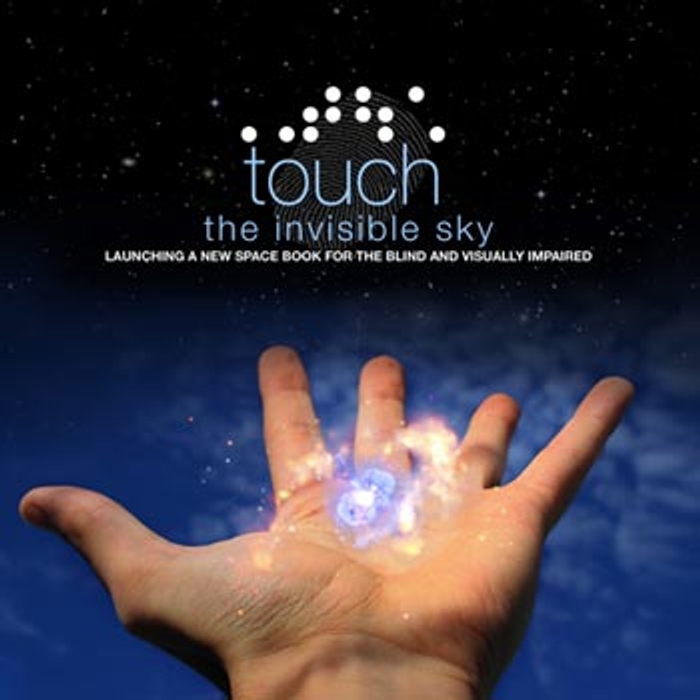
 Credit: Dr. Mark Lacy; Ozone Publishing; Dr. Simon Steel; Vivial Seki; Benning Wentworth and students at the Colorado School for the Deaf and Blind.; Space Telescope Science Institute; the Origins Forum; the Universe Forum, the Chandra X-ray Center, and the Spitzer Science Center.
Credit: Dr. Mark Lacy; Ozone Publishing; Dr. Simon Steel; Vivial Seki; Benning Wentworth and students at the Colorado School for the Deaf and Blind.; Space Telescope Science Institute; the Origins Forum; the Universe Forum, the Chandra X-ray Center, and the Spitzer Science Center.
"Touch the Invisible Sky"
What does a globular cluster feel like? Or a star near exploding? Or a black hole? Astronomers who study the invisible Universe at infrared or X-ray wavelengths need some way to make their findings understandable to humans. Usually this means projecting the intensity, or sometimes the temperature, of an object as a viewable image. But eyes are imperfect. Now scientists with the Spitzer Space Telescope, the Chandra X-ray Center, the Hubble Space Telescope and other institutes have devised a new means to bring the wonders of their observations to an even larger proportion of the population in NASA's new book, "Touch the Invisible Sky". This book uses a combination of Braille and traditional text and photographs to present a totally new experience of the sky, with a variety of tactile textures and symbols chosen to represent different physical features and characteristics of selected cosmic objects (selected from the the small fraction of stuff made of normal matter, not the larger fraction of stuff made from dark matter no one can see). Wonder what the Universe sounds like? Listen to the podcast.
<
HEA Dictionary ● Archive
● Search HEAPOW
● Other Languages
● HEAPOW on Facebook
● Download all Images
● Education ● HEAD
>
Each week the HEASARC
brings you new, exciting and beautiful images from X-ray and Gamma ray
astronomy. Check back each week and be sure to check out the HEAPOW archive!
Page Author: Dr. Michael F. Corcoran
Last modified Monday, 26-Feb-2024 17:03:21 EST


